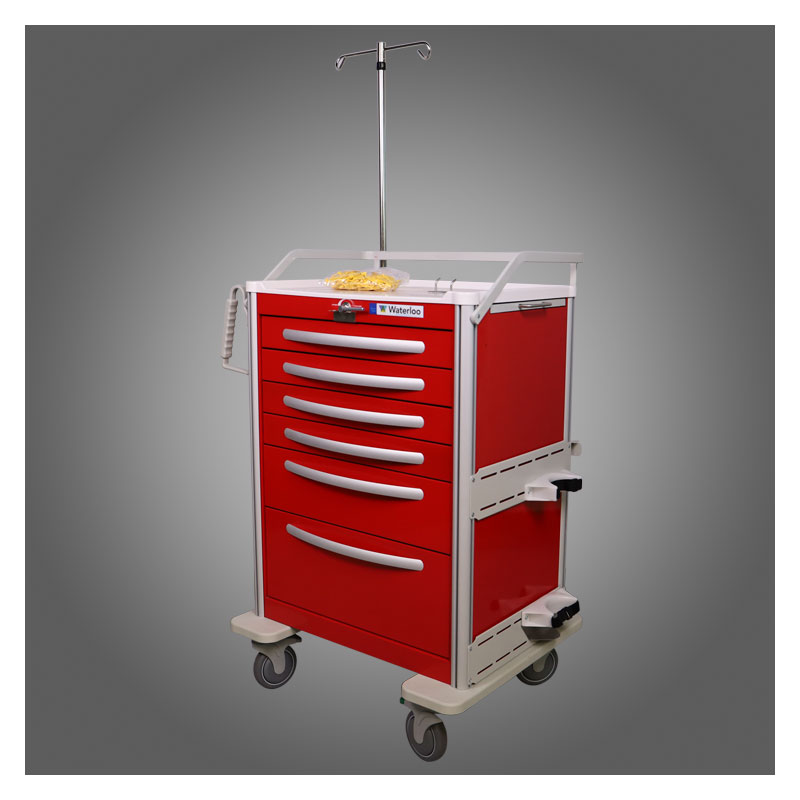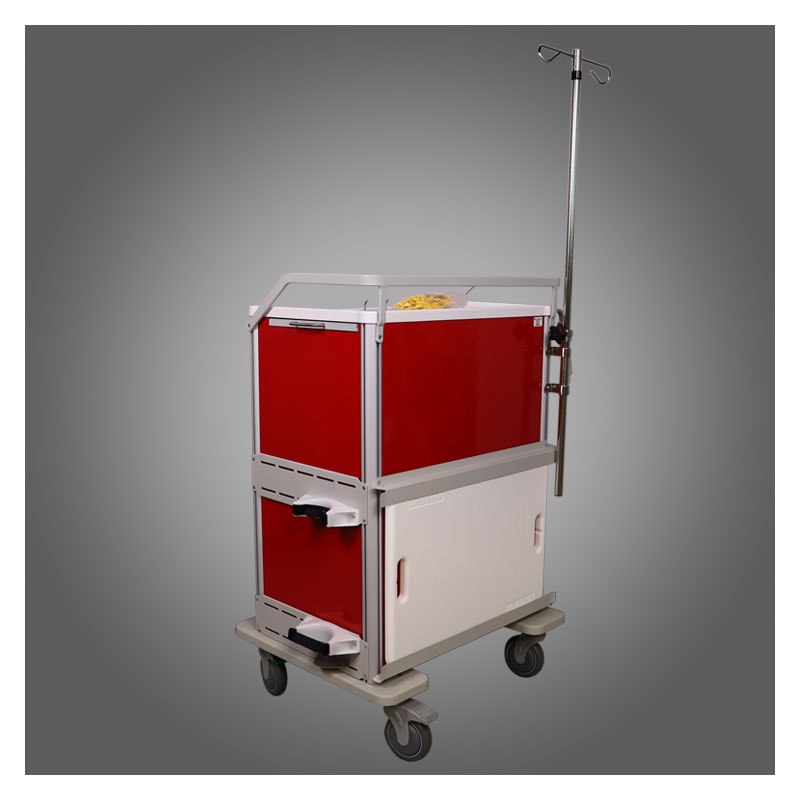

What is Included in a Crash Cart
So what is typically included in a crash cart? A crash cart’s primary role is to safely and effectively transport lifesaving supplies and equipment to the scene of a cardiac or respiratory emergency within a medical facility. Overall contents will vary somewhat from facility to facility, but the essentials remain fairly consistent.
The sole goal of a crash cart is to improve patient outcomes by facilitating the code team’s rapid response to the cardiac/respiratory emergency. As important as a rapid response is, so too is organization and the integrity of the cart’s contents. If clinicians arrive at the scene of a code quickly, but supplies are hard to find or even missing, they cannot administer care to the patient and their life can be put in jeopardy. So organization and cart content integrity are paramount to the effectiveness of any code cart.
Critical to maintaining emergency crash cart integrity is the locking mechanism. Waterloo code carts come standard with our industry unique “Transport Lock” for use with plastic security seals. The transport lock serves two purposes. The primary purpose is to quickly identify the cart’s contents are secure through use of plastic tamper evident seals. These tamper evident seals are installed while the cart is in the locked position and will break when the cart is unlocked to show that the cart has been accessed and needs to be inventoried.
The second function the “Transport lock” offers is securing the drawers during rapid transit. With our “Transport Lock” engaged the drawers on a Waterloo cart cannot be opened even during high speed transit to the site of the code. This protects patients and staff from drawers opening during high speed cornering causing a tipping hazard or risk of the drawers themselves striking patients/staff as they fly open. Beyond these safety concerns our “Transport lock” prevents pilferage when the cart is sitting idle and unattended.
On the top of most every code cart you will find a defibrillator and a supply of electrode pads ready to be used in an emergency. Alternatively, electrodes can be stored more securely in one of the cart’s many drawers to insure that they are ready for use. You may also find a code log book or checklist stored on the cart top that provides information on cart inspections; next to out-date inventory, etc.
The top drawer of a code cart is most often for the pharmacy tray and is where the medications are stored. Common medications include, Adenosine, Amiodarone, Atropine, Calcium Chloride, Dextrose, Dobutamine, Dopamine, Epinephrine, Lidocaine, Magnesium Sulfate, Nitroglycerin, Norepinephrine, Vasopressin, Verapamil, Sodium Bicarbonate, Sodium Chloride, among others. Typically these medications are stocked by the pharmacy in a drug tray wrapped in a tamper evident clear plastic security bag.
The next drawer will oftentimes house breathing equipment. This would include endotracheal tubes, tracheostomy tubes, nasal cannula, oxygen flow meter, laryngoscope supplies such as light bulbs and batteries, exam gloves, and suction equipment/devices.
Another drawer would contain IV supplies such as Blood tubes, alcohol swabs, tape, IV start kits, syringes, arterial blood gas kits and syringes, IV solutions, saline, IV tubes and extension tubing.
Additionally, there will generally be a larger drawer on the bottom for bulk supplies such as suction equipment, cut down packs, gloves, sutures, etc.
Externally mounted accessories that are standard on most every code cart include and IV pole, Cardiac board and oxygen tank bracket. These three essential accessories are externally mounted to facilitate rapid access. The cardiac board is located on the outside rear of the cart slides easily out of it’s brackets to allow staff to quickly administer chest compressions. The oxygen tank bracket is located on the side of the cart for easy access, as is the telescoping IV pole. Additional accessories (Suction trays glove box holders, sharps brackets, baskets, etc…) are offered to further enhance the performance of your code cart.
Every facility will configure their code carts differently, but they all share the same general characteristics. The important thing is that each code cart is configured to a single standard across the entire fleet. It is important that nurses and staff are familiar with the location of each life-saving item located on the cart.
